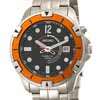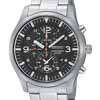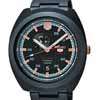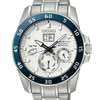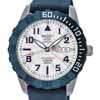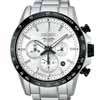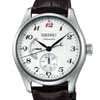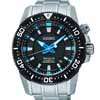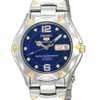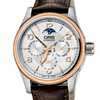Seiko Date Finder
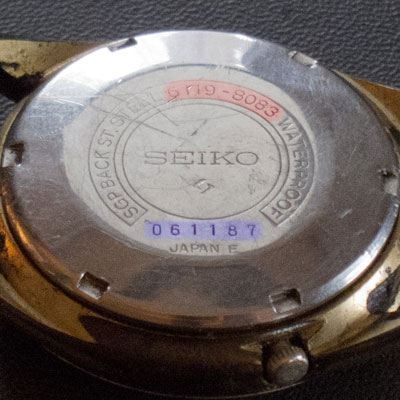
Example #1
6119-8083 | 061187
Mvmt-Case | Serial"When was my Seiko made?" We hear that a lot here at WatchSleuth so we built this page to help you figure it out. The page includes a calculator along with instructions and example images to help you find the movement caliber, case code and serial number on the back of your watch. The calculator uses these codes to do its magic.
Seiko Production Date Calculator
Your Results:
Your watch was most likely produced in August of 1992. It is often difficult to determine when Seiko stopped making a particular movement therefore it is possible that your watch was made in 2002. You can also use the style of the watch and any known history of ownership as clues to narrow down the decade.
If you believe this information is not accurate please let us know so we can improve our data.
You can also view the entire datefinder database. We encourage people to send us additions and corrections.

Example #1
6119-8083 | 061187
Mvmt-Case | SerialFinding the Model and Serial Number
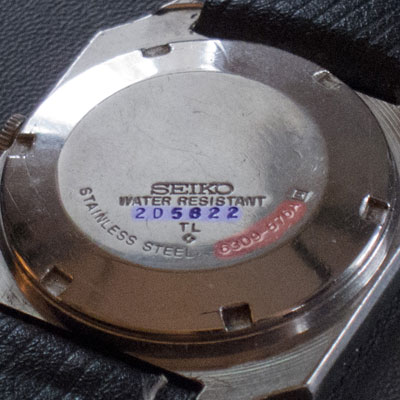
Example #2
6309-576A | 2D5822
Mvmt-Case | SerialMost Seikos have a "retail" model number that is displayed in the store but not written anywhere on the watch. They also have a "reference" model number that is written on the case back. This reference model number is a combination of two numbers:
- movement caliber
- case code
The other number you will need is the serial number. This is also on the case back and is six digits long. In the example images the serial number is highlighted in blue. Every watch has a unique combination of reference model number plus serial number.

Example #2
6309-576A | 2D5822
Mvmt-Case | SerialHow is the Date Calculated
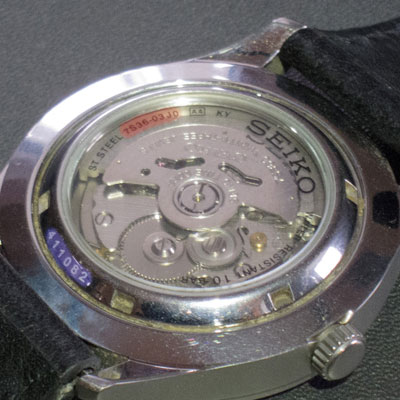
Example #3
7S36-03J0 | 411082
Mvmt-Case | SerialThe first digit of the serial number tells you the last digit of the year the watch was made. Looking at the example images:
- for example #1 the year ends in 0
- for example #2 the year ends in 2
- for example #3 the year ends in 4
Using this additional information we can update our three examples:
- the 6119 was first made in 1970 so #1 is from 1970 or 1980
- the 6309 was made from 1976 to 1987 so #2 is from 1982
- the 7S36 was first made in 1996 so #3 is from 2004 or 2014
The second digit of the serial number is also useful. It tells you the month the watch was manufactured. Here are the possible values:
-
1 = January
2 = February
3 = March
4 = April
5 = May
6 = June
7 = July
8 = August
9 = September
0 = October
N = November
D = December
The remaining four digits of the serial number indicate the production number for the watch. If your last for digits are 0000 then you have the first watch made for that model reference number. Returning to our examples and using the second digit from the serial number we get the following production dates:
- The 6119-8083 061187 was made in June of 1970/1980
- The 6309-576A 2D5822 was made in December of 1982
- The 7S36-03J0 411082 was made in January of 2014

Example #3
7S36-03J0 | 411082
Mvmt-Case | SerialWhy Do We Ask for the Case Code
If you were paying close attention you may have noticed we asked for the case code in the form above but we did not mention using it when calculating the date. You can leave that field blank and still find the date for your watch however if you complete the field we will provide a listing of watches from our Seiko catalogs that match the movement and case code.
Special Thanks
What you see here is in large part thanks to this excellent Quartzimodo article How to tell when you Seiko watch was made. Unfortunately the Jayhawk Production Date Calculator (by John Gauch) which is linked to in the Quartzimodo article no longer seems to be available, so we built our own. Another useful resource we found during our research was The Seiko Manufacture Date Decoder on the Retro Seiko website. It does not seem to be as well known and we hope that our movement database is more complete and that our instructions are more helpful. As with any part of WatchSleuth we encourage people to contact us with suggestions, corrections or any other information that would make our site more useful.

